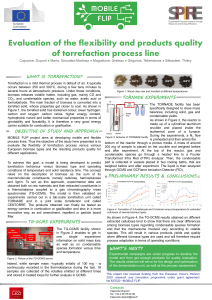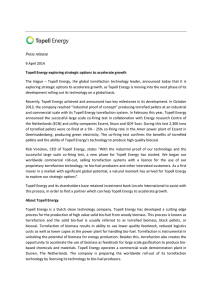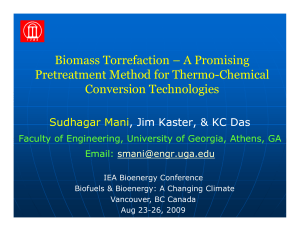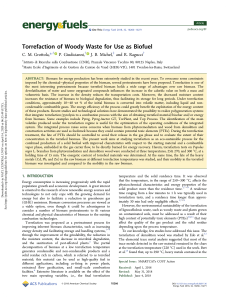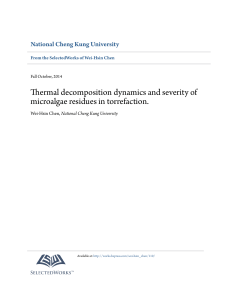Poster Abstract Template
advertisement
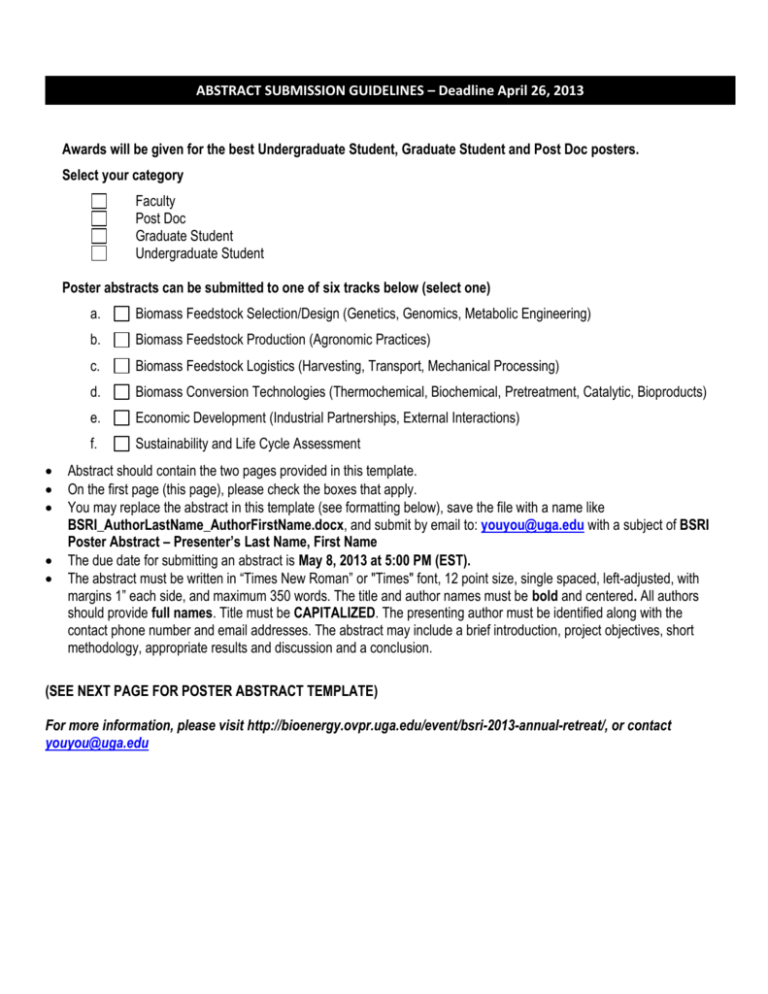
ABSTRACT SUBMISSION GUIDELINES – Deadline April 26, 2013 Awards will be given for the best Undergraduate Student, Graduate Student and Post Doc posters. Select your category Faculty Post Doc Graduate Student Undergraduate Student Poster abstracts can be submitted to one of six tracks below (select one) a. Biomass Feedstock Selection/Design (Genetics, Genomics, Metabolic Engineering) b. Biomass Feedstock Production (Agronomic Practices) c. Biomass Feedstock Logistics (Harvesting, Transport, Mechanical Processing) d. Biomass Conversion Technologies (Thermochemical, Biochemical, Pretreatment, Catalytic, Bioproducts) e. Economic Development (Industrial Partnerships, External Interactions) f. Sustainability and Life Cycle Assessment Abstract should contain the two pages provided in this template. On the first page (this page), please check the boxes that apply. You may replace the abstract in this template (see formatting below), save the file with a name like BSRI_AuthorLastName_AuthorFirstName.docx, and submit by email to: youyou@uga.edu with a subject of BSRI Poster Abstract – Presenter’s Last Name, First Name The due date for submitting an abstract is May 8, 2013 at 5:00 PM (EST). The abstract must be written in “Times New Roman” or "Times" font, 12 point size, single spaced, left-adjusted, with margins 1” each side, and maximum 350 words. The title and author names must be bold and centered. All authors should provide full names. Title must be CAPITALIZED. The presenting author must be identified along with the contact phone number and email addresses. The abstract may include a brief introduction, project objectives, short methodology, appropriate results and discussion and a conclusion. (SEE NEXT PAGE FOR POSTER ABSTRACT TEMPLATE) For more information, please visit http://bioenergy.ovpr.uga.edu/event/bsri-2013-annual-retreat/, or contact youyou@uga.edu Poster Abstract Template IMPACT OF TORREFACTION ON THE GRINDABILITY AND FUEL CHARACTERISTICS OF FOREST BIOMASS First Author1,*, Second Author1, Third Author2 1 2 Department/Program Name, Organization name, Address, City, State, ZIP, Country Department/Program Name, Organization name, Address, City, State, ZIP, Country *Presenting Author (Ph: 706-xxx-xxxx; Email: xxxx@uga.edu) ABSTRACT Combustion and co-firing of biomass with coal in natural form has become a major hurdle, primarily due to low energy density, structural heterogeneity and wide moisture variations. Thermal pretreatment or torrefaction of biomass under anoxic condition can address the above issues and transform into an energy dense and consistent quality solid biomass fuel. This paper investigated the torrefaction of pine wood chips and logging residues at temperatures ranging from 225oC to 300oC and 30 min residence time using a laboratory scale batch torrefaction reactor. Change in mass loss, chemical compositions, moisture content and heating value of biomass after each torrefaction condition was determined. Grinding performance of torrefied biomass was evaluated by determining energy required for grinding; particle size distribution and average particle size produced and were compared with raw biomass and coal. Specific energy consumption for grinding of torrefied biomass decreased significantly with increase in torrefaction temperatures. It was reduced to as low as 24 kWh t-1 at 300oC torrefaction temperature due to brittle nature of torrefied biomass. The energy density of torrefied biomass increased with increase in torrefaction temperature. Torrefaction of biomass clearly showed the improved fuel characteristics and grindability of biomass closer to coal. Keywords: Torrefaction, wood chips, logging residues, grinding energy consumption, fuel characteristics, coal.
